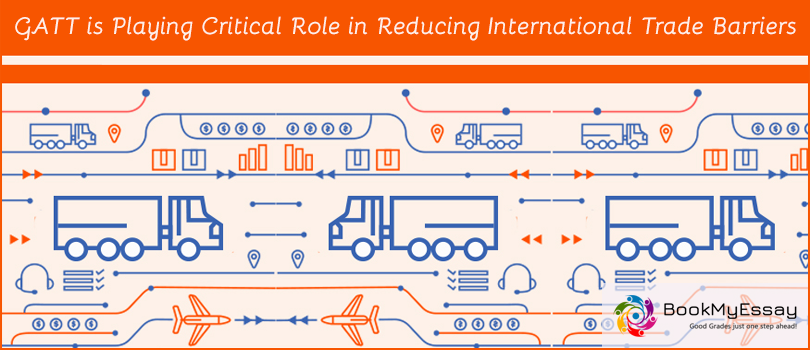GATT stands for "General Agreement on Tariffs and Trade." The major role of GATT in international trade was to control the contracting parties to fulfill the goal of the protocols under which the tariffs and other barriers are reduced. When it comes to international trade, this helps in attaining the liberalization. The students can learn more about this by taking International Trade Assignment Help from the experts online. However, further, in this blog, we are going to discuss how GATT plays a role in the reduction of barriers in the International Trade.
Evaluating The Role Of GAAT In International Trade
GATT has built some specific standards to control the contracting parties. This basically regulated the participation of the contractors in the international trade systems. GATT designated numerous fundamental principles to manage how contracting parties will commence business in international markets. There are many articles stated for this such as General Most-Favored-Nation Treatment (Article II), and General Elimination of Quantitative Regulations (Article XI) Non-discriminatory Administration of Quantitative Restrictions (Article XIII) and so on.
It is important for the contracting party to obey all the basic principles. If they are not considering these principles when they get involved in trade relations then they will be sentenced. Other than this, contracting parties can reach the agreements, and made precise rules during past multilateral trade agreements. You can take proofreading services online if you have written about it.
Secondly, GATT has also decreased the tariff based on mutual benefit. After World War II, this was done to stimulate commerce liberalization. The prime contribution of GATT is to decrease the tariffs with the help of sponsoring series, of agreed negotiations. The use of these sponsoring the multilateral agreements, the tariff was decreased significantly. On average, there was around a 35% average reduction in tariffs. This happened in both the Tokyo Round and the Kennedy Round. Adding to that, the Uruguay Round was one of the richest multilateral agreement in the history of GATT.
Under this, the contracting parties followed the rules that deducted the rate of tariff.� On average, there was around 39% of tariff cut in this series of negotiation. By deducting this tariff rate, there were very few trade barriers for doing business internationally. This mutually benefited the contracting parties that participated and supported trade liberalization. The students can learn more about this by taking academic writing guidance.
Thirdly, GATT also made reductions in the scope of discrimination in tariff and trade. This was also the reason why there were significant reductions in other trade barriers. According to the Article II: "schedule of concession in �GATT 1947?, it was stated that every contracting party should work according to the commerce. There will be no treatment of discrimination. There will be no less favorable parties. This was the statement of GATT which regulated that contracting parties are not allowed to increase the tariff levels according to their desires. There are also countries that use other non-tariff barriers for the protection of their protectionism.
Buy Quality Assignment On International Trade From BookMyEssay!
BookMyEssay is the academic writing service provider company with the team of subject matter expert. The academic professionals at this website make well research assignments that are free from errors and plagiarism. If you are facing any kind of difficulties with international trade assignment then this reach out to these experts today!






 3 Bellbridge Dr, Hoppers Crossing, Melbourne VIC 3029
3 Bellbridge Dr, Hoppers Crossing, Melbourne VIC 3029



